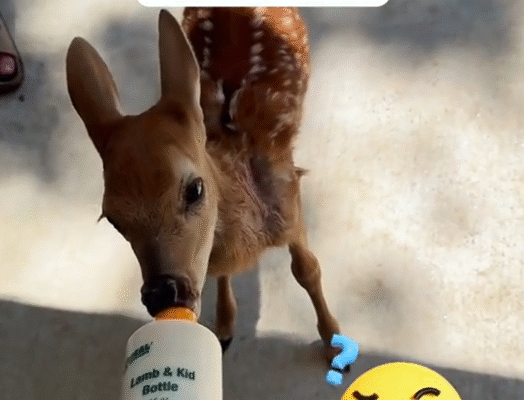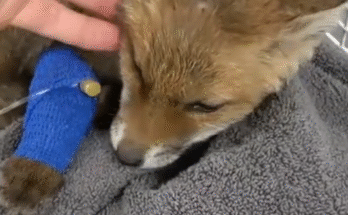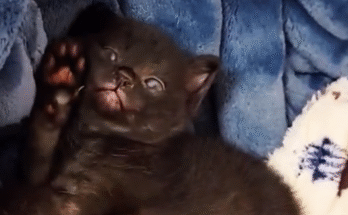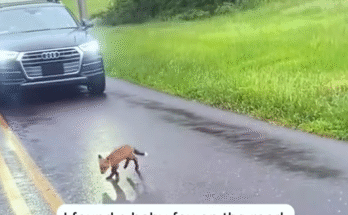It was a quiet Sunday morning when I decided to take my usual hike through the woods behind my house. The air was crisp and fresh, the forest floor damp from last night’s rain. The birds were singing, and shafts of sunlight pierced through the canopy like golden beams from heaven. It was the kind of peacefulness you wish you could bottle and carry with you all week.
But then, a sharp cry echoed through the woods.
It wasn’t a bird or a squirrel—it was something else. Something distressed.
I froze in place and listened carefully. The cry came again, softer this time, like a whimper. Curiosity mixed with concern, and I followed the sound. After weaving through a thick patch of ferns and ducking under a fallen log, I saw it—a tiny baby deer tangled in some old barbed wire near a decaying fence post, shivering and bleeding slightly from its hind leg.
The fawn’s large eyes locked onto mine, wide with fear. I crouched down slowly, speaking in a calm voice to avoid scaring it more. “Hey there, little one. It’s okay. I’m going to help you.”
Its breathing was rapid, chest heaving with panic. I gently approached, using my multi-tool to cut away at the rusted wire. It took a few minutes, but I eventually freed the baby deer. Once it realized it could move, it tried to stand but stumbled. Its leg was too injured to walk on. I wrapped it in my jacket, cradling it like a newborn. It didn’t resist anymore. It was exhausted, and maybe it knew I was its best chance.

Now came the big question—what do I do next?
I had no wildlife rescue on speed dial, and the nearest vet was about twenty minutes away by car. I carefully hiked back with the deer in my arms, heart racing, praying I wouldn’t trip or startle the poor creature. Once at home, I placed it gently in a padded crate I sometimes used for my dog. I offered it a bit of water using a shallow dish and called a local animal rescue center.
But it was Sunday. Nobody picked up.
Plan B: I called the vet clinic, who thankfully answered and agreed to see us right away. I drove like the wind, talking to the fawn the whole way. “Hang in there, buddy. You’re gonna be okay.”
At the clinic, the vet cleaned the wound and bandaged the leg. They said it was a young male, maybe only a couple of weeks old, and likely got separated from his mother. The vet gave him some pain medication and told me he’d need a few days of care before he could be released.
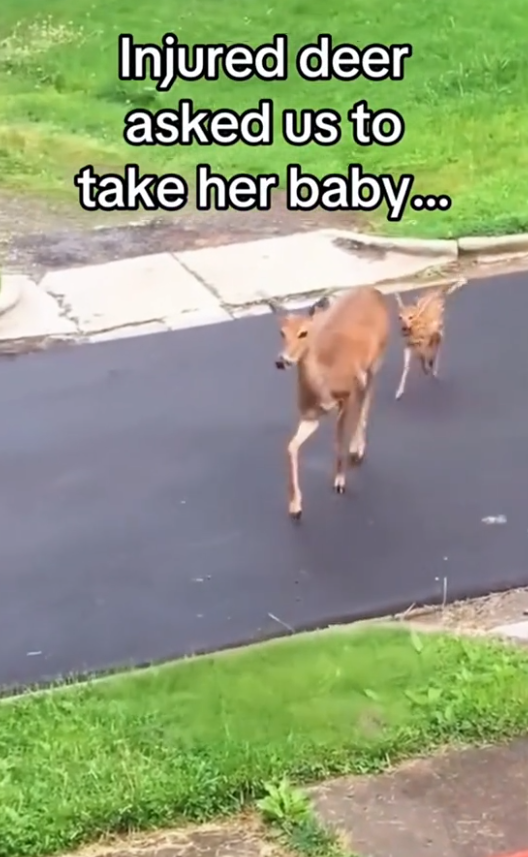
“You can leave him here,” the vet offered. “We have wildlife contacts who can take over.”
But something in me said no. “Can I take care of him for now? Just until he’s strong enough?”
The vet agreed—as long as I followed a care plan and came in for a follow-up visit.
I named him Sprig.
For the next few days, Sprig lived in my backyard shed, which I transformed into a quiet, safe space with hay, blankets, and a heater for chilly nights. I learned how to feed him a special milk formula using a bottle and gave him his medicine on time. Each day, he grew a little stronger, his leg healing slowly but surely.
But it wasn’t just his leg that healed—something in me began to heal too.
You see, I’d been going through a rough patch. Life felt stale. I’d been lonely, disconnected, going through the motions. But Sprig gave me purpose. I’d wake up excited to check on him, feed him, sit by his side. He trusted me, and I felt needed.
The days passed, and Sprig’s energy returned. He’d start to hop around, testing his leg. One afternoon, he even tried to follow me into the house! It was adorable—and a bit chaotic.
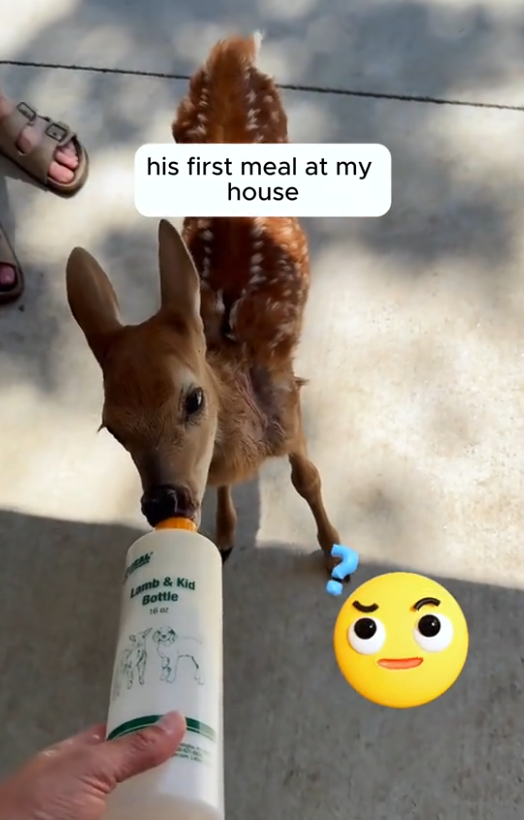
I documented his recovery on social media, just to share the joy. To my surprise, people responded with overwhelming kindness. Friends and strangers alike reached out to say how much his story warmed their hearts. One woman messaged me saying, “I was having such a dark week, and then I saw your videos of Sprig. Thank you.”
Eventually, a wildlife rehabilitation expert contacted me. She’d seen the posts and offered to help transition Sprig back into the wild properly. She explained how fawns need to be carefully reintroduced to their natural environment to avoid imprinting too much on humans.
It was the right thing to do—but it wasn’t easy.
The day I dropped Sprig off at the rehab center, I cried. I told him he was strong now, that he’d do great, that the forest needed him back. He nuzzled into my neck one last time before being led away gently.
A month later, the rehab center sent me a photo. Sprig, standing tall in the grass, surrounded by trees, looking straight at the camera with those same wide eyes—but now with strength in them. He was officially released into a protected area with other deer.
But that’s not where the story ends.
Inspired by Sprig, I started volunteering at a local animal rescue. I’ve helped injured squirrels, birds, even a baby raccoon. I also started a blog to share stories of animal rescues and raise awareness about wildlife safety. Turns out, that one fawn didn’t just need rescuing—he rescued me too.
And the forest? I still hike those same trails. I often glance around, wondering if Sprig is out there, hidden behind the trees, watching me with those big, gentle eyes.
Maybe one day, I’ll see him again.
But even if I don’t, I’ll never forget that unexpected bond, that twist in my routine hike that turned into something much bigger than I could’ve imagined.
Because sometimes, when you rescue a baby deer… your own heart gets rescued right back.
